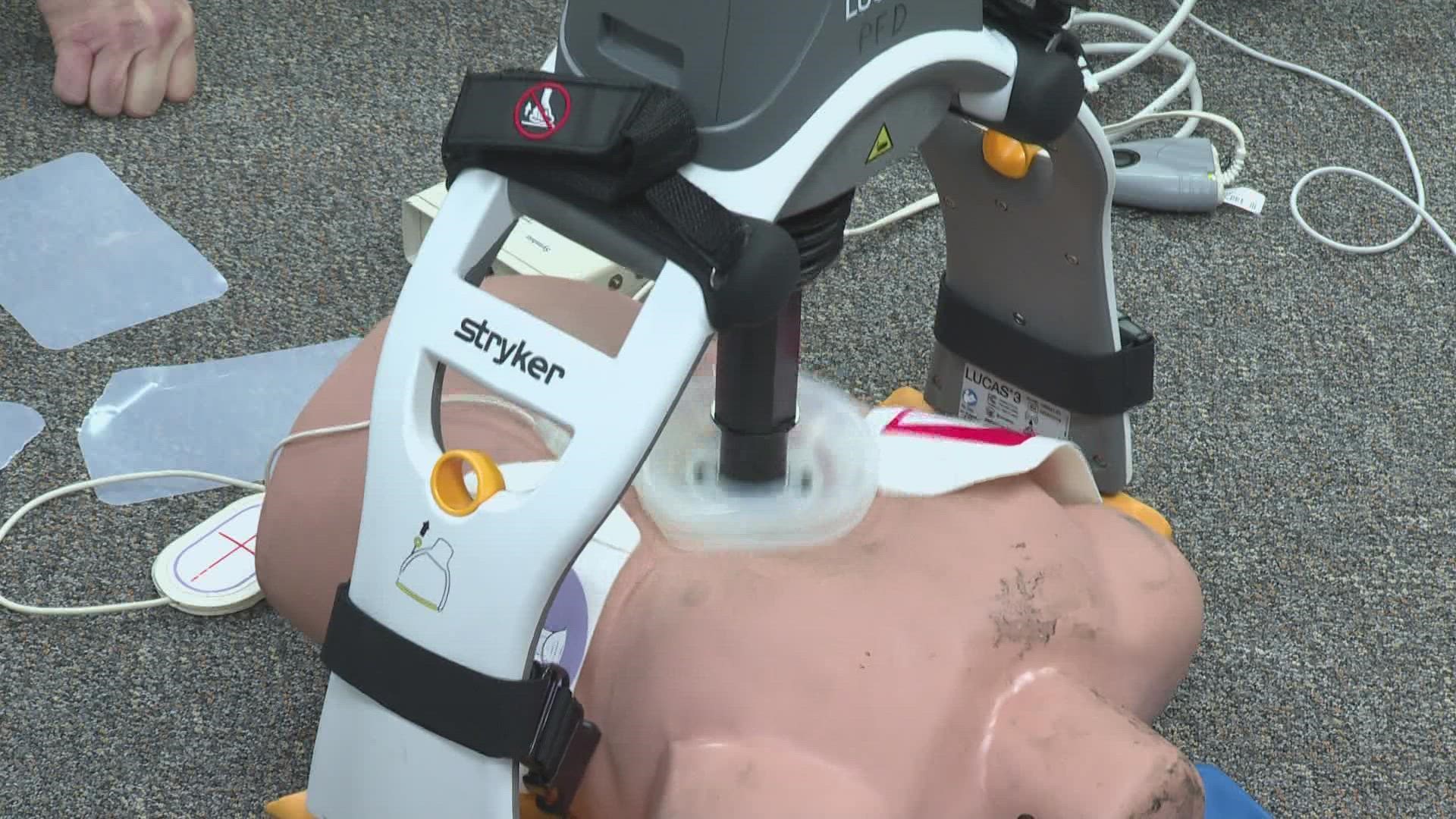PORTLAND, Maine — The Portland Fire Department has a new tool at its disposal when responding to cardiac arrest incidents.
This month, the department acquired three LUCAS mechanical CPR devices which will support first responders in treating and transporting cardiac arrest victims.
"It allows us to free up some of the resources once the LUCAS is in place," Division Chief Sean Donaghue said.
While treatment for cardiac arrest patients will begin the same way, with a team of up to nine responders on scene attempting to resuscitate the victim with traditional hand chest compressions, the new CPR device could be helpful in a number of circumstances.
"We've positioned one on Peaks Island, where we actually are much like some of the smaller communities in Maine where we don't have a lot of staffing," Donaghue said.
Donaghue said the LUCAS device could be used in situations where fewer first responders are available, like on Peaks Island. It can also be used in situations of prolonged cardiac arrest, which would allow first responders to provide aid to the patient in other ways, or respond to any additional incidents. The LUCAS device can also be used while a patient is transported.
"By protocol right now, if somebody re-arrests prior to having this device we would have to stop and then reinitiate manual compressions to ensure we're doing them as effectively as possible. Now with this device, leaving it on the patient during transport we can just simply hit a button and it start the compressions again," Portland Fire Department training captain Colin Ayer said.
Ahead of Christmas, the Portland Fire Department had a department-wide training on the new equipment. Mechanical CPR devices were first approved by Maine EMS in 2019, and Portland had been working to acquire some since.
After receiving a grant from FEMA's Assistance to Firefighters fund, the department was able to acquire three devices, which will be stored on the paramedic support car, with the deputy chief, and on Peaks Island.
Staff said paired with another piece of tech called a Zoll monitor, which provides real-time feedback on compression quality, it can make a big difference.
"We have all of these pieces of technology put together, and if we use them effectively, there's a much higher chance of getting the patient back," Ayer said.
According to Donaghue, the Portland Fire Department has responded to more than 120 cardiac arrest incidents this year, and has utilized the LUCAS device four times since staff completed training in December.

